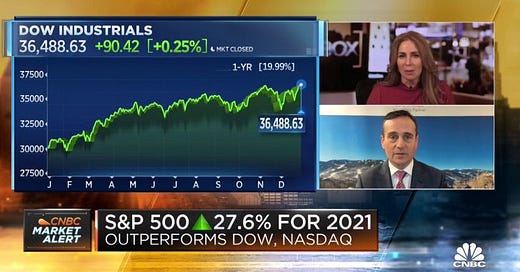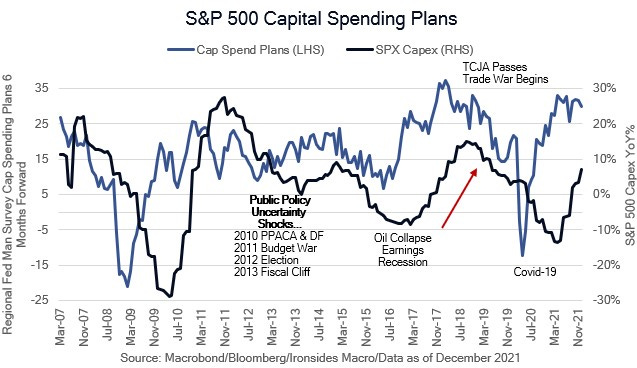Happy New Year and thanks for being part of the Ironsides Macro mission

Just in Case
A number of factors combined to bring a strong year for US equities to a strong finish in a week with minimal economic data, no Fed speeches and Congress in recess. These factors included favorable seasonality combined with increasing evidence that Omicron is the bridge from pandemic to endemic (see study below), the positive impact on the corporate sector from the collapse of the BBB Act and easing financial conditions (lower real rates), as well as developing realization that Fed policy normalization in the early stages is likely to mitigate the counterproductive side effects of overly accommodative policy. The Treasury curve had a marginal parallel shift higher over the last week, however through the month of December, the front-end (2-year notes) led the move higher as the market moved slightly beyond the FOMC’s summary of economic projection for a 75bp increase in the policy rate in 2022. The marginal increase in nominal rates last week obfuscated a large divergence between breakevens and real rates. The 10-year real rate (TIPS yield) declined 10bp last week and marginally for all of 2021 despite the Fed’s hawkish pivot, underscoring that monetary policy remains ultra-accommodative and counterproductive in terms of bank profitability, housing and generally misallocating capital. Next week’s release of the FOMC minutes should provide clarity on the discussion of balance sheet contraction that Chairman Powell mentioned at the press conference, and whether the Committee is sympathetic to changing the normalization sequencing logic in this Kansas City Fed staff report from October, When Normalizing Monetary Policy, the Order of Operations Matters. A proponent of balance sheet contraction, St. Louis Fed President Bullard is also scheduled to speak.
These results are consistent with Omicron displacing the Delta variant, since it can elicit immunity which neutralizes Delta making re-infection with Delta less likely. In contrast, Omicron escapes neutralizing immunity elicited by Delta and therefore may re-infect Delta infected individuals. The implications of such displacement would depend on whether Omicron is indeed less pathogenic than Delta. If so, then the incidence of Covid-19 severe disease would be reduced and the infection may shift to become less disruptive to individuals and society.
Omicron infection enhances neutralizing immunity against the Delta variant





